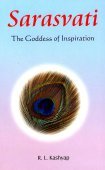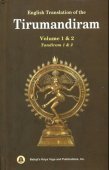Dawn: 2 definitions
Introduction:
Dawn means something in Hinduism, Sanskrit, biology. If you want to know the exact meaning, history, etymology or English translation of this term then check out the descriptions on this page. Add your comment or reference to a book if you want to contribute to this summary article.
Images (photo gallery)
In Hinduism
Shilpashastra (iconography)
Source: Shodhganga: Elements of Art and Architecture in the Trtiyakhanda of the Visnudharmottarapurana (shilpa)The Dawn is denoted by the Sanskrit term Uṣā, and follows specific guidelines of ancient Indian Painting (citra), according to the Viṣṇudharmottarapurāṇa, an ancient Sanskrit text which (being encyclopedic in nature) deals with a variety of cultural topics such as arts, architecture, music, grammar and astronomy.—In the Viṣṇudharmottarapurāṇa, the rules of Painting of different classes have been elaborately discussed. The time of uṣā i.e., dawn when the sun is about to rise. It seems to be a beautiful source of Painting. In the Viṣṇudharmottarapurāṇa, the picture of this time is associated with the rising of the sun, dim lamps and cocks in crying mood. In the Vedic period, some natural objects and phenomena were associated with the form of deities. The time of dawn is also portrayed as the Goddess Uṣā in the Ṛgveda and it is said that, in the beginning of the day, the mighty Sun sends goddess Uṣā and after that the Sun god enters into the earth and heaven. [...] The Viṣṇudharmottarapurāṇa also states that sometimes the picture of a dawn is said to have the people who are eager to do their work and also have a monkey.

Shilpashastra (शिल्पशास्त्र, śilpaśāstra) represents the ancient Indian science (shastra) of creative arts (shilpa) such as sculpture, iconography and painting. Closely related to Vastushastra (architecture), they often share the same literature.
Biology (plants and animals)
Source: Google Books: CRC World Dictionary (Regional names)Dawn in Nigeria is the name of a plant defined with Sorghum bicolor in various botanical sources. This page contains potential references in Ayurveda, modern medicine, and other folk traditions or local practices It has the synonym Holcus saccharatus L. (among others).
Example references for further research on medicinal uses or toxicity (see latin names for full list):
· Mantissa Plantarum (1771)
· Economic Botany (2004)
· Flora Lusitanica (1995)
· Physiologia Plantarum (2005)
· Species Plantarum
· Taxon (2000)
If you are looking for specific details regarding Dawn, for example diet and recipes, pregnancy safety, extract dosage, health benefits, chemical composition, side effects, have a look at these references.

This sections includes definitions from the five kingdoms of living things: Animals, Plants, Fungi, Protists and Monera. It will include both the official binomial nomenclature (scientific names usually in Latin) as well as regional spellings and variants.
See also (Relevant definitions)
Starts with: Dawn flower, Dawnfawh, Dawng, Dawngpui, Dawngte.
Ends with: Hringtuidawn, Idawn.
Full-text (+537): Pratyusha, Arunodaya, Prabhata, Pratar, Aruna, Usa, Ushas, Ushasya, Ushaka, Suprabhata, Dinadi, Bhagyodaya, Agrasandhya, Strighosha, Prage, Anuru, Divasamukha, Prabodhika, Vibhata, Pratahsandhya.
Relevant text
Search found 244 books and stories containing Dawn; (plurals include: Dawns). You can also click to the full overview containing English textual excerpts. Below are direct links for the most relevant articles:
Rig Veda (translation and commentary) (by H. H. Wilson)
Sun and Myself < [July – September 1991]
S’ami – The Saint Singer of Sind < [March 1945]
Sri Aurobindo on Indian Culture < [April – June, 1983]
A History of Indian Philosophy Volume 1 (by Surendranath Dasgupta)
Part 17 - Vedānta Ethics and Vedānta Emancipation < [Chapter X - The Śaṅkara School Of Vedānta]
Part 7 - In what sense is the world-appearance false? < [Chapter X - The Śaṅkara School Of Vedānta]
Part 6 - The main idea of the Vedānta philosophy < [Chapter X - The Śaṅkara School Of Vedānta]
A Manual of Khshnoom (by Phiroz Nasarvanji Tavaria)
Yoga-sutras (Ancient and Modern Interpretations) (by Makarand Gopal Newalkar)
Sūtra 3.5 < [Book III - Vibhūti-pāda]
Sūtra 2.39 < [Book II - Sādhana-pāda]
Sūtra 2.28 [Aṣṭāṅgayoga] < [Book II - Sādhana-pāda]
The Gospel of Buddha (by Paul Carus)
Related products



